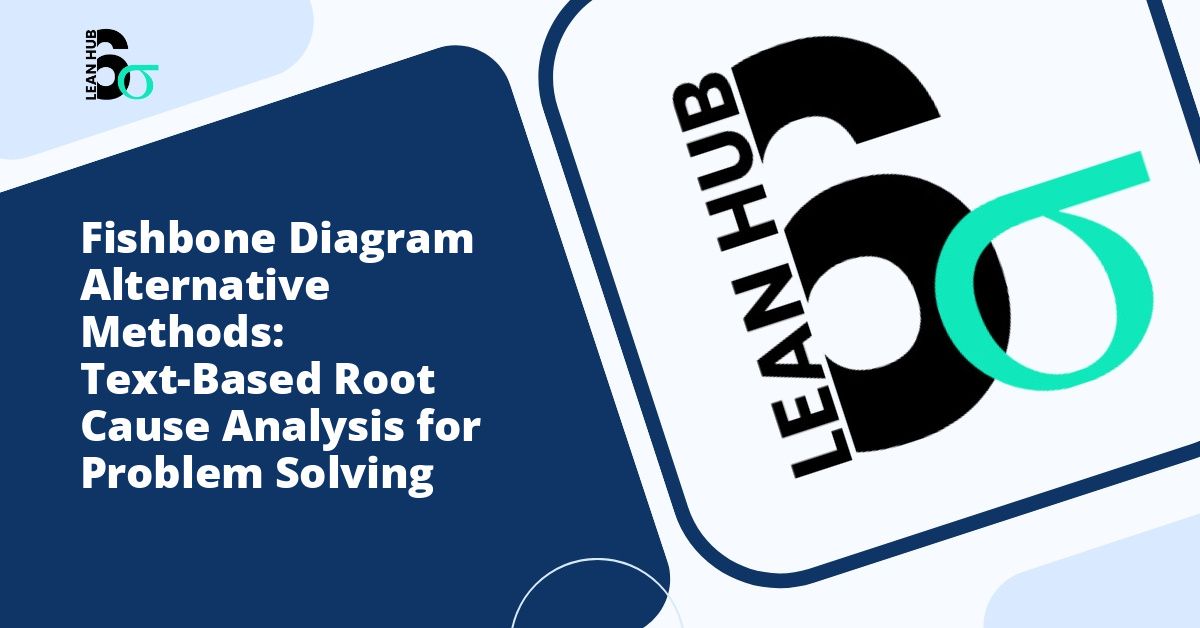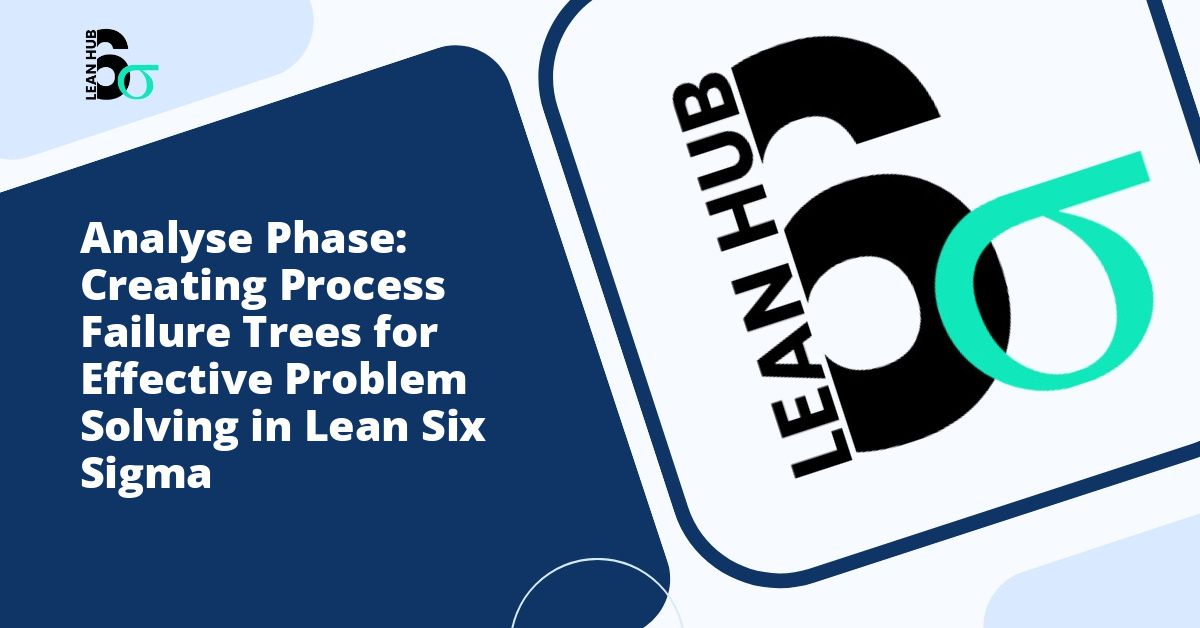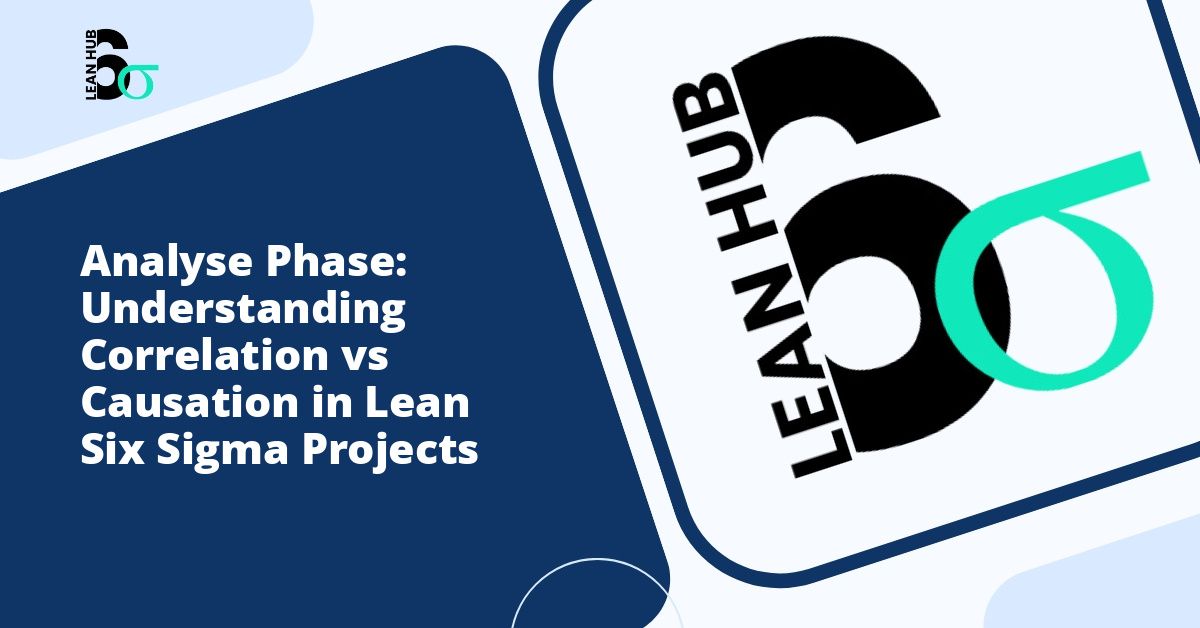Root cause analysis stands as a cornerstone methodology in quality management and problem-solving frameworks. While the fishbone diagram (also known as the Ishikawa diagram) has long been the preferred visual tool for identifying root causes, text-based alternatives offer powerful options for organizations seeking more flexible, accessible, and detailed approaches to problem analysis. This comprehensive guide explores effective text-based root cause analysis methods that can complement or replace traditional fishbone diagrams in your continuous improvement initiatives.
Understanding the Limitations of Traditional Fishbone Diagrams
Before diving into alternative methods, it is important to understand why organizations might seek alternatives to the classic fishbone diagram. While visually appealing and straightforward, fishbone diagrams present several challenges in modern problem-solving environments. You might also enjoy reading about Lean Six Sigma Analyze Phase: The Complete Guide for 2025.
The visual nature of fishbone diagrams can become unwieldy when dealing with complex problems involving numerous potential causes. Additionally, these diagrams often lack the depth needed to capture detailed contextual information, making them less suitable for intricate operational issues. In remote work environments or collaborative digital platforms, creating and modifying visual diagrams can prove cumbersome compared to text-based alternatives that integrate seamlessly with documentation systems. You might also enjoy reading about How to Conduct a 5 Whys Analysis: Step-by-Step Guide with Examples.
The Role of Root Cause Analysis in Lean Six Sigma
Within the lean six sigma methodology, root cause analysis plays a critical role throughout the project lifecycle. During the recognize phase, teams identify problems and begin their preliminary investigation into underlying causes. This initial recognition sets the foundation for the entire improvement project, making the choice of analytical tools particularly important. You might also enjoy reading about Root Cause Analysis in Six Sigma: 7 Proven Techniques to Find the Real Problem.
Text-based root cause analysis methods align naturally with lean six sigma principles by promoting thorough documentation, facilitating data-driven decision-making, and enabling easier tracking of improvement initiatives over time. These methods support the structured approach that lean six sigma practitioners require while offering greater flexibility in capturing complex cause-and-effect relationships.
Five Whys: The Foundation of Text-Based Root Cause Analysis
The Five Whys technique represents perhaps the most straightforward text-based alternative to fishbone diagrams. This method involves asking “why” repeatedly, typically five times, to drill down from a surface-level problem to its fundamental root cause.
Implementing the Five Whys:
- Begin with a clear problem statement
- Ask why the problem occurs and document the answer
- Take that answer and ask why it occurs
- Continue this process until you reach a root cause that, when addressed, will prevent recurrence
- Verify the root cause through data collection and validation
The beauty of this method lies in its simplicity and text-based nature. Teams can conduct Five Whys analysis in meeting notes, project documentation, or collaborative platforms without requiring specialized diagramming tools. The sequential format naturally creates an audit trail that stakeholders can review and challenge.
Advantages of the Five Whys Approach
This technique requires no special training or tools, making it accessible to all team members regardless of their technical background. The linear progression from symptom to root cause creates clear accountability and understanding. Furthermore, the text-based format integrates seamlessly into existing documentation systems and knowledge management platforms.
Structured Narrative Analysis for Complex Problems
For more complex situations requiring deeper investigation, structured narrative analysis offers a comprehensive text-based alternative. This method involves creating detailed written accounts of the problem, its context, contributing factors, and potential root causes organized into specific sections.
Components of Structured Narrative Analysis:
- Problem Description: A detailed account of what is occurring, when it happens, and who is affected
- Historical Context: Background information about similar issues or related circumstances
- Contributing Factors: A categorized list of all potential contributors to the problem
- Cause-Effect Relationships: Written explanations of how each factor connects to the problem
- Evidence Documentation: Supporting data, observations, and measurements
- Root Cause Conclusions: Synthesized findings identifying fundamental causes
This approach proves particularly valuable during the recognize phase of lean six sigma projects, where comprehensive understanding of the problem landscape is essential. The narrative format allows teams to capture nuances and contextual details that visual diagrams might oversimplify or omit entirely.
Tabular Root Cause Analysis
Tabular methods provide structured text-based frameworks that combine the organization of visual tools with the detail capacity of written analysis. These tables typically organize information into columns representing different aspects of the investigation.
A standard tabular root cause analysis might include columns for potential causes, category classification, supporting evidence, verification status, and action items. This format enables teams to systematically evaluate each potential cause while maintaining clear documentation of their analytical process.
Benefits of Tabular Formats
Tables offer excellent compatibility with spreadsheet software and database systems, facilitating data analysis and trend identification across multiple improvement projects. Teams can easily sort, filter, and prioritize causes based on various criteria. The structured format also ensures consistency in analysis across different problems and teams.
Hierarchical List Method for Cause Categorization
The hierarchical list method uses indented text structures to represent relationships between primary causes, secondary causes, and contributing factors. This approach mirrors the branching structure of fishbone diagrams while maintaining a purely text-based format.
Example Structure:
- Primary Category (People)
- Training deficiencies
- Inadequate onboarding program
- Lack of refresher training
- Communication breakdowns
- Unclear standard operating procedures
- Language barriers
- Training deficiencies
This method preserves the categorical thinking that makes fishbone diagrams effective while offering the advantages of text-based documentation. Teams can expand or collapse sections as needed, making it ideal for both overview presentations and detailed analysis.
Question-Based Root Cause Analysis
A question-based approach structures the investigation around a comprehensive set of interrogative prompts designed to uncover root causes systematically. Unlike the simple repetition of the Five Whys, this method employs varied questions targeting different aspects of the problem.
Practitioners develop question sets tailored to their specific context, covering areas such as who is affected, what conditions must exist for the problem to occur, when the problem manifests, where it happens, why current controls fail, and how the situation developed over time. The answers to these questions create a rich text-based record of the investigation.
Integrating Text-Based Methods into Your Quality Management System
Successful implementation of text-based root cause analysis requires thoughtful integration into existing quality management processes. Organizations should develop standardized templates that guide teams through their chosen method while allowing flexibility for unique circumstances.
Training programs should emphasize critical thinking skills rather than just procedural steps. Teams need to understand not only how to apply these methods but also when each approach offers the greatest value. During the recognize phase of lean six sigma projects, project sponsors should clearly communicate expectations regarding documentation depth and analytical rigor.
Choosing the Right Method for Your Situation
Selecting among text-based root cause analysis methods depends on several factors including problem complexity, available time and resources, team experience, and organizational culture. Simple, recurring problems may require nothing more than a Five Whys analysis, while complex systemic issues might demand structured narrative or tabular approaches.
Many organizations find that maintaining a toolkit of multiple methods provides optimal flexibility. Teams can select the most appropriate approach based on their specific situation rather than forcing every problem into a single analytical framework.
Conclusion
Text-based root cause analysis methods offer viable and often superior alternatives to traditional fishbone diagrams. These approaches provide greater detail capacity, easier integration with modern documentation systems, and improved accessibility for distributed teams. Whether implementing the straightforward Five Whys technique, comprehensive structured narratives, organized tabular formats, hierarchical lists, or question-based frameworks, organizations can achieve thorough root cause identification without relying on visual diagrams.
As lean six sigma practitioners continue refining their approaches during the recognize phase and beyond, text-based methods deserve serious consideration. By expanding your analytical toolkit beyond conventional visual tools, you position your organization to address problems with greater precision, better documentation, and more sustainable improvements.








